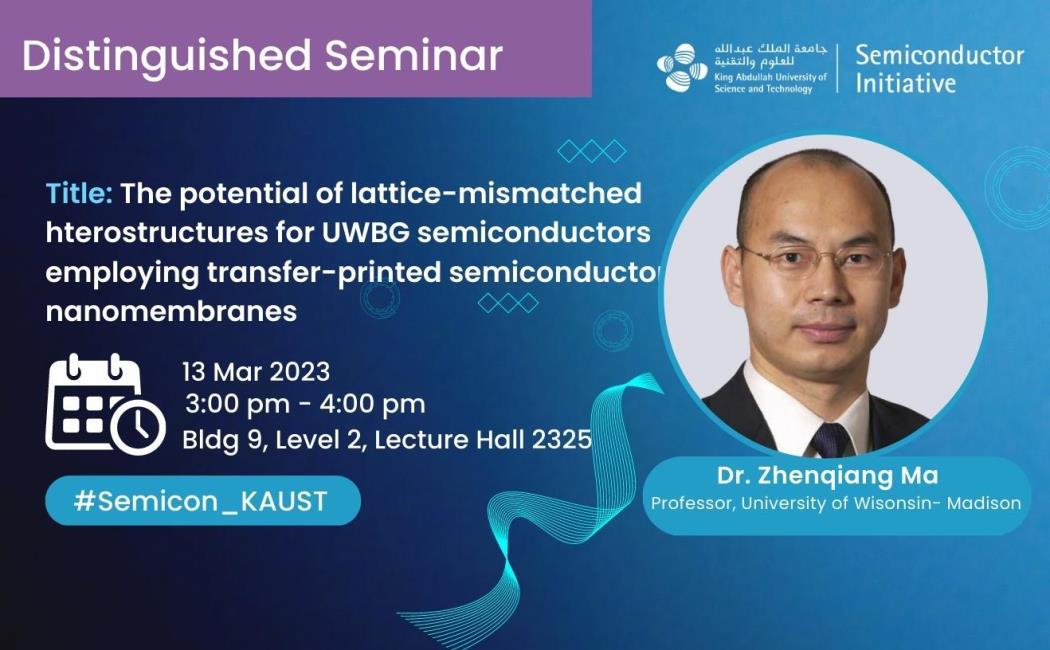
The potential of lattice-mismatched heterostructures for UWBG semiconductors employing transfer-printed semiconductor nanomembranes - Dr. Zhenqiang (Jack) Ma
Semiconductor heterostructures are rooted from the theory conceived by Nobel Laureate Hebert Kroemer in 1957. Since then, the heterostructures have reshaped human society. These heterostructures were universally formed by epitaxy techniques uniquely governed and enabled by the stringent requirements of lattice matching. Limited by this requirement, realizing heterostructures between lattice-mismatched semiconductors has been a decades-long obstacle, although the materials space to explore and the number of heterostructures that can be made are vast compared to its lattice-matched counterparts. In this talk, lattice-mismatched heterostructures, i.e., heterogeneous heterostructures, or arbitrary heterostructures, formed via semiconductor grafting based on a quantum tunneling gluing approach are first described. The potential of using the lattice-mismatched heterostructures to solve the biggest materials issues faced by the UWBG communities will be demonstrated with preliminary results.
About the Speaker
Zhenqiang (Jack) Ma (S’98–M’01–SM’12–F’18) received the B.S. degree in applied physics and the B.E. degree in electrical engineering from Tsinghua University, Beijing, China, in 1991, the M.S. degree in nuclear science and the M.S.E. degree in electrical engineering from the University of Michigan, Ann Arbor, in 1997, and the Ph.D. degree in electrical engineering from the University of Michigan in 2001.,From 2001 to 2002, he was a member of the R&D Team at Conexant Systems and later its spin-off, Jazz Semiconductor (now TowerJazz), in Newport Beach, CA, USA. In 2002, he left Jazz to join the faculty of the University of Wisconsin–Madison as an Assistant Professor with the Department of Electrical and Computer Engineering. He is currently a Lynn H. Matthias Professor of Engineering and a Vilas Distinguished Achievement Professor with affiliated appointments in four other departments and research institutes in engineering and medical school. His current interdisciplinary research covers electrical engineering, materials science and engineering, and biomedical engineering. He has authored or coauthored about 500 technical papers and book chapters related to his research. He holds several dozens of U.S., foreign, and international patents. His present research interests focus on the materials, physics and device applications of lattice-mismatched 3D-semiconductor heterostructures, microwave flexible electronics, semiconductor nanomembrane-based sensors, and bioelectronics. He is a Fellow of the AAAS, AIMBE, APS, NAI, and OSA.
For any questions, please contact Prof. Boon Ooi and Prof. Sahika Inal.